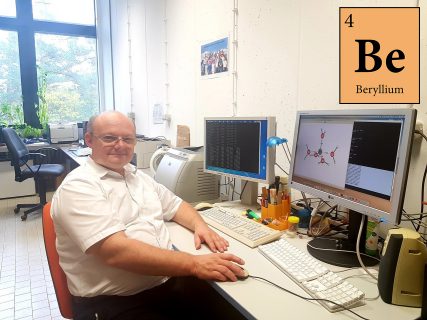Celebrating 150 years of the periodic table

For the 150th anniversary of the periodic table, we asked our scientists about their favourite element
Dr. Ralph Puchta, Chair of Inorganic and Organometallic Chemistry, on beryllium:
“On the one hand, compounds of beryllium are fascinating because of breath-taking gems such as emeralds or aquamarines; on the other hand, beryllium is reputed to be the most poisonous, non-radioactive element, if rightly so is controversial. Beryllium is “my” element for several reasons. It plays a central role in the development of elements in stars. In the past, people used gems, which contained beryllium, so called beryls, as optical aids (therefore the German word “Brille”). Nowadays, we use beryllium and its compounds in the high-tech sector; for example, the mirrors of the James Webb telescope are made of it.
Only few molecules fit around the smallest metal cation that we know – usually four in a tetrahedral arrangement. Reactions and the related mechanisms at such centres as well as the question how beryllium ions react in molecular cages are at the centre of my research as a theoretically oriented, predominantly inorganic chemist.”
Further interviews within the framework of the “150 Jahre Periodensystem” series as well as more exciting stories about FAU can be found on our website and the FAU Facebook page.